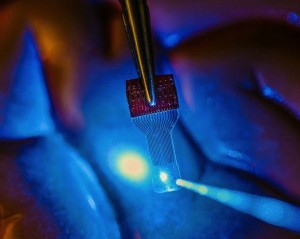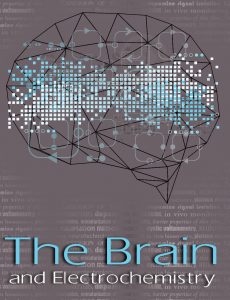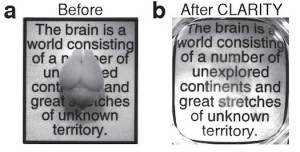
See-through sensors, which have been developed by a team of UW-Madison engineers, should help neural researchers better view brain activity.
Credit: Justin Williams’ Research Group
A team of engineers at the University of Wisconsin-Madison have developed invisible implantable medical sensor array, which will help neural researchers better view and understand brain activity.
This from the University of Wisconsin-Madison:
Neural researchers study, monitor or stimulate the brain using imaging techniques in conjunction with implantable sensors that allow them to continuously capture and associate fleeting brain signals with the brain activity they can see. However, it’s difficult to see brain activity when there are sensors blocking the view.
Read the full article here.
The development of the see-through sensor will help overcome this major technological hurdle.
“One of the holy grails of neural implant technology is that we’d really like to have an implant device that doesn’t interfere with any of the traditional imagining diagnostics,” says Justin Williams, a professor of biomedical engineering and neurological surgery at UW-Madison. “A traditional implant looks like a square of dots, and you can’t see anything under it. We wanted to make a transparent electronic device.”
The research is published in the October 20 issue of the online journal Nature Communications.
The team developed the sensor using graphene due to its versatility and biocompatibility, thus making the device incredibly flexible and transparent because the electronic circuit elements are only four atoms thick.
Sensor science and technology is growing rapidly in response to an ever-increasing demand for faster, cheaper, smaller, and more sensitive means to monitor the chemical, biological, and physical world around us. Make sure you stay up-to-date with the latest research in this exciting field through our Digital Library.
 The deadline for submission to the Journal of The Electrochemical Society Focus Issue on The Brain and Electrochemistry has been extended to April 30, 2018.
The deadline for submission to the Journal of The Electrochemical Society Focus Issue on The Brain and Electrochemistry has been extended to April 30, 2018.


